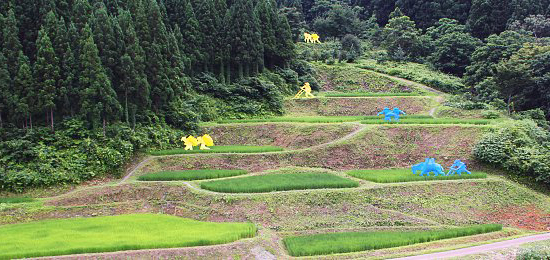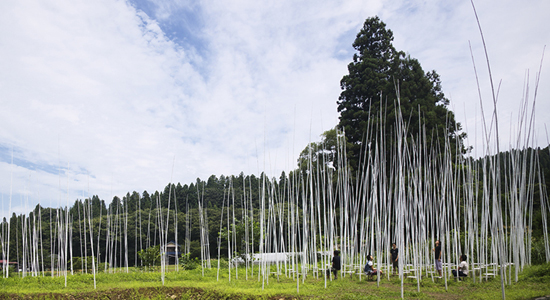A Different Picture of Japan
The recent Sendai earthquake and tsunami in Japan have brought global awareness to the region, as well as renewed interest in how to most effectively address major crises and natural disasters.
In terms of logistics and communications, preparedness and urban planning, as well as life safety considerations, the building industry indeed plays a significant role in working towards addressing these issues.
However, instead of discussing current infrastructure, building codes, or regulatory issues, I thought it might be worthwhile to look at the natural and built landscapes from another perspective, and take cues from Japan with regard to sustainability in a social, cultural and ecological context.
In addition to the many tangible losses from the events, additional social repercussions could have lasting implications for this culturally-rich island country- one that values the arts, tradition, and actively supports related initiatives.
One program in particular is the Echigo-Tsumari Art Triennial, the world's largest public art festival, occurring every three years in the Niigata Prefecture.
Stone Forest // Kees Ouwens
The exhibition consists of hundreds of artworks installed in public fields, abandoned buildings and forests and is aimed at reviving local and international interest and tourism, as well as promoting arts in the rural region. This convergence of public art, economic revitalization, and social equity intrinsically reflects the Triple Bottom Line, as these valued institutions and concepts are critical to a sustainable future.
The festival does just that, engaging visitors with the natural landscape in unexpected and innovative ways, while providing a creative and exploratory platform for emerging talent.
minna-no-kusamura // Takeshi Saito + Kiyotaka Kurosa
Artists collaborate with local communities to determine environmental issues, interpret the physical context and evaluate placemaking objectives. The resulting site-specific installations include permanent and temporary outdoor transformations of abandoned homes and schools, creating gathering spaces that celebrate and encourage interaction with the beauty of the natural landscape.
Song of Wind // Yasuyuki Wantanabe
Snow in Snow // Takenori Miyamoto + Hiromi Seno
So, as the international community considers the most effective means to rebuild, revitalize, and assess Japan's physical recovery, it's similarly worthwhile to consider the country's historic cultural and artistic legacy in these efforts- and their value in creating a viable and lasting future from all perspectives: environmental, economic and social.
For Lots of Lost Windows // Utsumi Akiko
Find more information on the festival and imagery of the artworks at the website.







